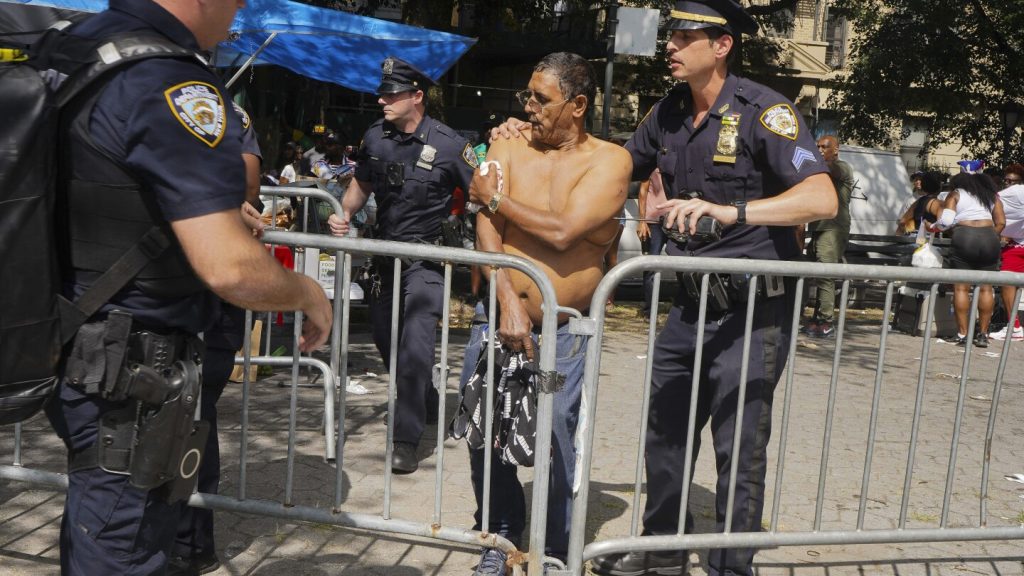Five people were shot at the West Indian American Day Parade in New York City on Monday, according to police. The shooting occurred around 2:35 p.m. along the parade route in Brooklyn, with a gunman targeting a specific group of people. The parade, which had started earlier in the day, continued despite the violence. Two people were critically wounded, while the other three victims are expected to survive. The gunman fled the scene, and police are asking for any video footage from bystanders to help with the investigation.
An AP videographer witnessed at least two people being treated for gunshot wounds to the face and arm. The area near the parade route was cordoned off by police, and crime scene markers were placed. Despite the incident, the parade continued as officers bagged items along the route. Chief of Patrol John Chell emphasized that the shooting was not random and was an intentional act by one person targeting a specific group of people. He requested the public’s assistance in providing any video footage that could help solve the case.
Attendees of the parade were shaken by the violence, with one person expressing sadness over the incident. Senate Majority Leader Chuck Schumer was marching in the parade at the time of the shooting and completed the route. He expressed his concern for those affected by the shooting and called for an end to gun violence in America. The West Indian American Day Parade, in its 57th year, is a vibrant celebration of Caribbean culture, featuring colorful costumes, flags, and music. Despite its joyous atmosphere, the event has been marred by violence in the past.
The parade route, which runs along Eastern Parkway in Brooklyn, attracts large crowds of spectators and participants. Many local politicians with West Indian heritage or connections to the Caribbean community join the festivities. Over the years, the parade has been the site of previous violent incidents, including fatal shootings and injuries. The parade’s origins can be traced back to traditional pre-Lent Carnival celebrations started by a Trinidadian immigrant in Manhattan, which were later moved to a warmer time of year in the 1940s. Brooklyn began hosting the parade in the 1960s, reflecting the large Caribbean immigrant population in the borough.
The Labor Day parade is the culmination of several days of carnival events in the city, including a steel pan band competition and J’Ouvert, a street party celebrating freedom from slavery. Despite the history of violence surrounding the event, organizers and participants hope to continue celebrating Caribbean culture and heritage in a peaceful and safe manner. The latest shooting at the West Indian American Day Parade serves as a reminder of the ongoing issue of gun violence in America and the need for increased efforts to prevent such incidents from occurring in the future.















